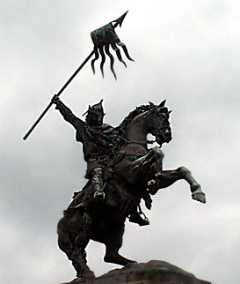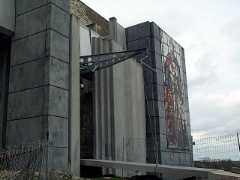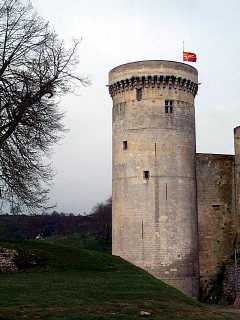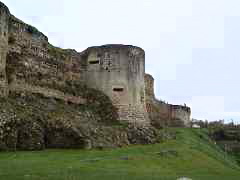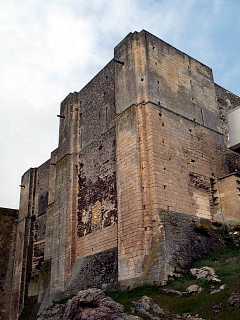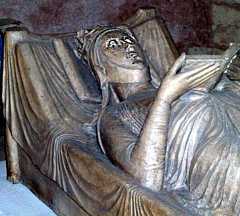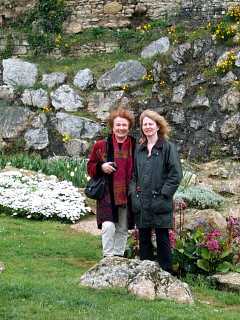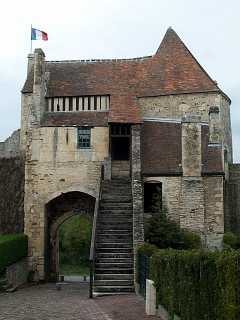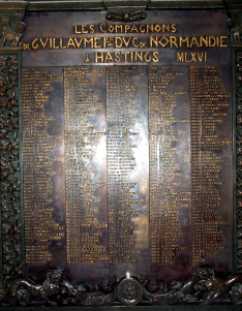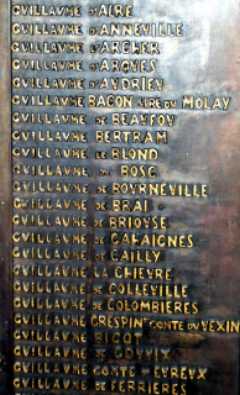Falaise was the birth place
of William the Conqueror. His father, Robert the Magnificent,
Duke of Normandy, famously saw Arlette, a tanner's daughter washing
her linen in a stream at Falaise. He took her to the castle as
his mistress and she gave birth to William at Christmas, 1027.
An impressive statue of the Conqueror (surrounded by the early
Dukes of Normandy) stands outside the castle entrance.
The castle ruins at Falaise
were recently restored to enable easier access for visitors.
This has been controversial locally because of the modern materials
used, including steel and glass.
The castle dominates a
panoramic landscape. The Dukes of Normandy, the Angevin Kings
and (from 1204) the Kings of France fortified the castle though
many turbulent years.
King Henry I built the Square Keep at Falaise. This is probably where William de Braose III held Arthur of Brittany in 1202. At the age of only sixteen, Arthur had challenged his uncle, King John, in an effort to take the crown. William de Braose captured Arthur at the siege of Mirebeau and held him in honourable captivity at Falaise Castle. King John was elated at
this victory, not least because his mother, Eleanor of Aquitaine
had been trapped inside Mirebeau castle when Arthur attacked
it. Soon William de Braose realised that John intended to harm
the young prince. He informed the King that it was his duty to
protect Arthur, and the Prince was moved to Rouen. Here Arthur
disappeared mysteriously. It was said that King John murdered
him with his own hands and threw the body into the River Seine.
The casts of three famous
tombs have been placed in the castle chapel. They represent Henry
II, his Queen, Eleanor of Aquitaine and their son Richard I.
The originals lie at Fontevrault. The tomb of Eleanor is particularly
lovely. Some people believe that Maud de Saint Valery, William
de Braose III's wife, once served Eleanor as a hand maiden, though
we can find no source for this story.
Lynda and Denise posed
for a photo at the castle entrance.
The defensive walls of
Falaise still survive. This is one of the gate houses which,
for us, is an unforgettable image of medieval Normandy. Nearby
is Arlette's Fountain, where Duke Robert first met her.
A large memorial, created
in bronze in 1931, displays the names of William the Conqueror's
companions at the Battle of Hastings. The name of William de
Braose appears here as "Guillaume de Briouse".
|
© Lynda Denyer, Steyning,
2000 |

